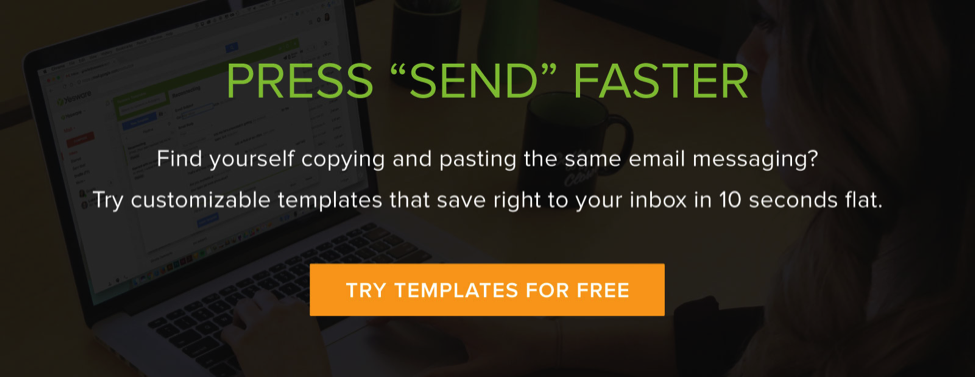A Proposal Template That Does The Heavy Lifting For You [Free Download]
Melissa Williams
A sales proposal template is where the rubber meets the road.
You already learned about their needs, and they learned about your offer. Now, it’s time to put it in writing and ask for a “yes.”
Below is our proposal template doc for you to steal for your own use (we give directions for how to use it at the bottom of this post).
This tool tells you when your proposal is opened — so you know when to follow up.
3 Buyer ‘About Me’s You Absolutely Need to Know
Before you fill in your proposal template, let us give you the right backdrop. Here are three realities today’s buyers are telling you:
1. “I want control of information and the sales process.”
Many buyers are skipping over Consideration and Intent to Buy. They do research online before talking to sales.
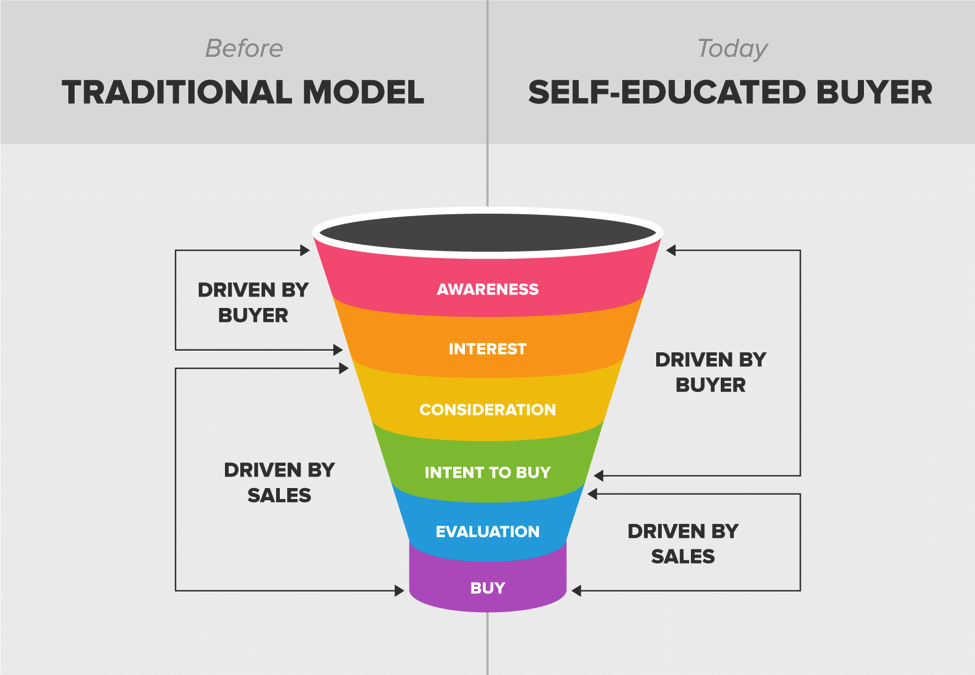
Why do they want to do it all on their own?
Dopamine. It’s the same chemical in our brain that delivers pleasure when our wants are fulfilled.
How do we know?
Monkeys.
A research experiment with monkeys proved for the first time that dopamine drives pleasure in the receipt of information leading up to a reward (think: proposal leading up to service).
Take it from the scientists:
“We conclude that monkeys treated information about rewards as if it was a reward in itself, preferring information to its absence and preferring to receive it as soon as possible.”
The fine print: This isn’t to say that buyers are monkeys, but that the experiment applies to humankind.
Now you know why we grab our phones to consult Google for every question and check Facebook more than 13 times a day.
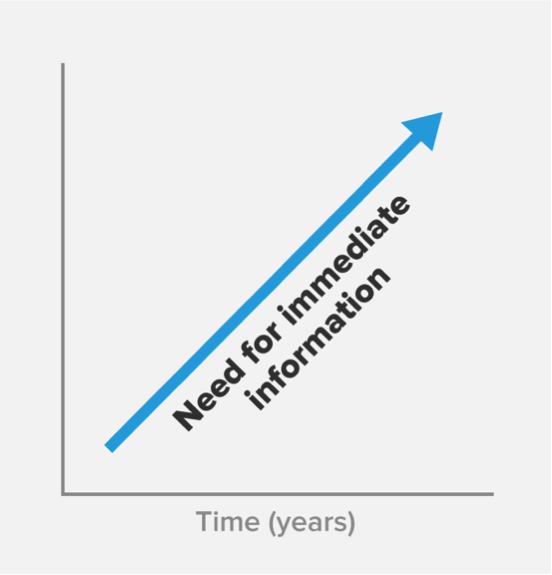
2. “I’ll vote you out if your proposal delivery time is too slow.”
You know how Violet in the Willy Wonka movie wants the Three-Course Dinner Chewing gum, and she wants it right then?
Buyers have that same urgency, and they’re getting the gum without turning into a giant blueberry. You need to give it to them, too.
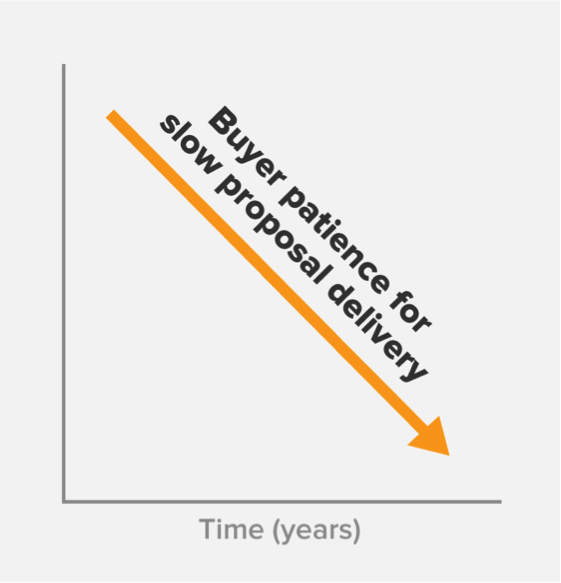
Vendors who gather prospect information and then go missing stick out like a sore thumb. Their competitors are delivering proposals in the next few days or sending updates.
Plus, it sets a bad precedent for the service you’re about to provide.
3. “No matter what you say, I don’t need you.”
You can be sure that someone else out there offers the same product or service as you. (Or they will soon if you’re the first.)
Selling means fending off substitutes.
The game-changers that set vendors apart are timing, personalization, and the ability to consult.
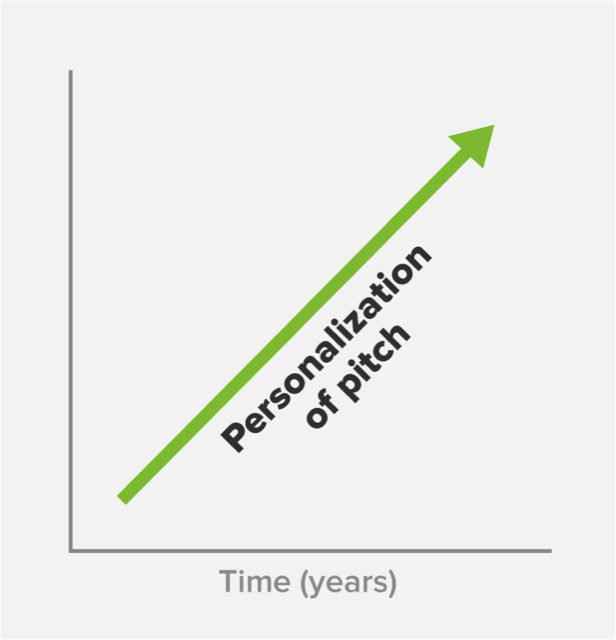
Proposals need to speak to your prospect’s exact needs and show that you listened.
Did you know you can track proposal read-time? See what you should scrap.
10 Characteristics Of The Best Business Proposal Template
1. Avoids premature proposal syndrome.
Buyers want what they want, and you should give it to them — but only when you have the right information.
Otherwise, you’re forced to send a generic business proposal that casts too wide a net and wastes both of your time.
Want to see how much time you’re wasting on proposal prep today?
Divide your annual salary by how many hours you work in a year (i.e. 260 working days in 2017 x hours you work per day). This gives you your hourly salary. Then, multiply that by the time it takes you to tailor a proposal.
As an example, here is the national average for a Business Development Manager:

source: Glassdoor, 2017
This puts the hourly salary (pre-taxes) at $41.23 per hour. ($96,487 / 2,340 hrs/yr for a 9-hr workday). Let’s say it takes you three hours to personalize each proposal. You’re up to $123.69 per proposal.
Now multiply that by the number of proposals you send out in a month that end up falling off.
That’s a lot of wasted money.
So, think: Budget, Authority, Need, Timeline. Do you have it all clearly laid out?
2. Uses social proof to show them you’re backed by their peers.
How many times have you watched a show or bought something because your friends gave you their word it was good?
This same concept applies to thousand-dollar-plus business deals. We trust our peers most.
What to do: Include a graphic with logos of customers in the same industry as your prospect in your business proposal template. You can also add a testimonial quote and headshot of a customer with a similar job title.
Here is a completed proposal template example for both logos a customer quote:
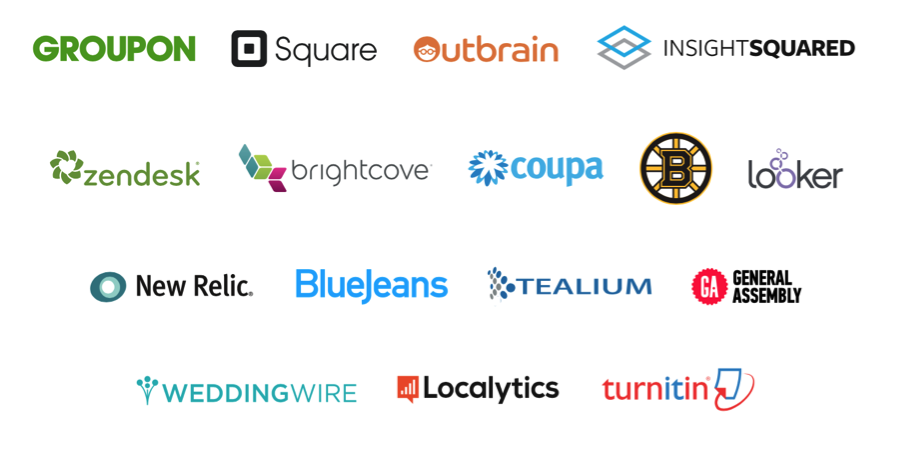
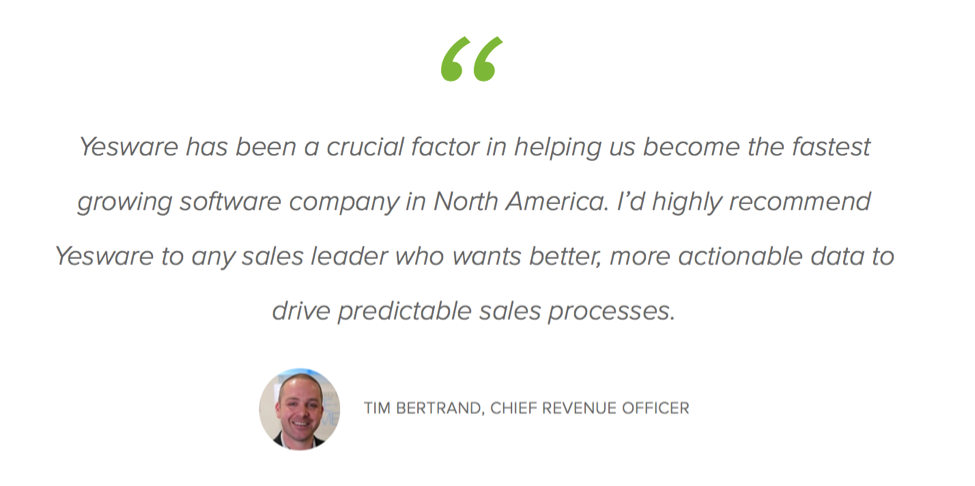
Pictures of people and customer brands increase your persuasion. Many experiments prove this to be true.
In one case, participants read this sentence: “Macadamia nuts are in the same evolutionary family as peaches.”
Those who saw the statement with a photo of macadamia nuts believed it to be true more than participants who read it without a photo.

You can check out the other experiments here.
3. Drives approval through emotion.
An average of 5.4 people have to sign off on a B2B decision today. This means you’re selling to different levels of a company with the one document that you send over.
The good news: No matter the title or position, your contacts share the same basic emotional needs.
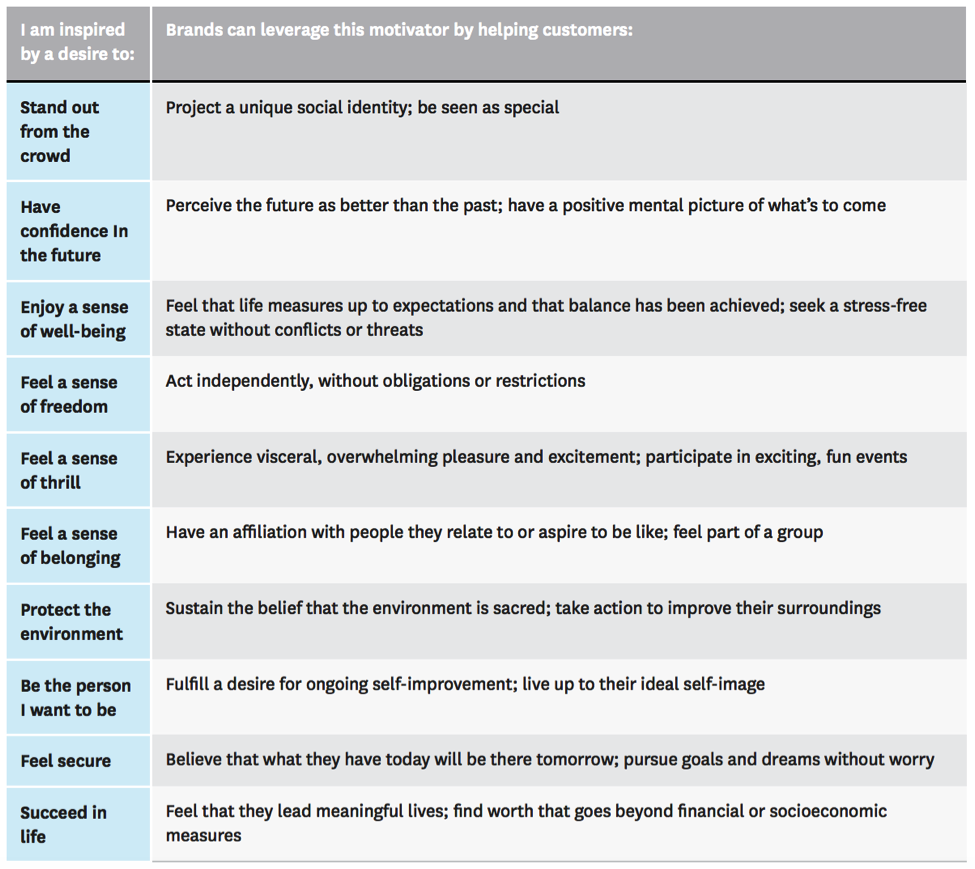
source: “The New Science of Customer Emotions” by Harvard Business Review
What to do: Give them confidence in the future. First, acknowledge their situation. Remember, whoever’s been leading the charge to find a solution on their end is already aware of this problem. But addressing it helps you connect with them. It also gives a common ground to the entire decision-making group you’re pitching to.
Then, paint a picture of the problemless future. Show them that you’re there to solve their problems and help them succeed in life. This gives them security, a sense of belonging, and the freedom to decide to say “yes.”
Hint: when you send your proposal, use this invisible tracker to see where each person spends the most time reading (so you know how to frame your next conversation).
4. Breaks up text with images & formatting changes.
Skim’s a type of milk but it’s also the most popular way to read in business.
An eye-tracking study of 232 webpage users revealed that the most popular way to read is to scan in an F-pattern. Like this:
![]()
The biggest takeaways:
- Exhaustive reading is rare;
- Use information-carrying words to start subheads, paragraphs, and bullet points;
- Break up text-heavy sections with images, tables, and lists to highlight key elements.
5. Does not contain typos.
Errors and/or grammatical issues negatively affect a recipient’s perception of you.
Typos tell your prospect: “you’re not worth my time.”
In many cases, you are proofreading, but you don’t catch things on your own. Don’t worry, it’s not your fault.
“The reason typos get through isn’t because we’re stupid or careless, it’s because what we’re doing is actually very smart, explains psychologist Tom Stafford, who studies typos of the University of Sheffield in the UK. “When you’re writing, you’re trying to convey meaning. It’s a very high level task,” he said. […] When we’re proof reading our own work, we know the meaning we want to convey. […] The reason we don’t see our own typos is because what we see on the screen is competing with the version that exists in our heads.” (source)
What to do: Ask someone on your team to read through a proposal before you send it. Or, plug your content into an automatic checker like Grammarly. The app site lets you upload a document from your computer.
6. Restates what you’ve already discussed with your main contact.
The worst thing you can do is surprise your main contact with something that you didn’t cover with them already.
Remember, they’re the bridge between you and the other decision-makers. They’ve been passing along what you’ve been saying. When you introduce something you haven’t discussed, it makes them look bad in front of their peers. You might think you’re adding in a surprise bonus, but it works to hurt them and their trust in you.
Key takeaway: no surprises. A business proposal ≠ a marriage proposal.
7. Is marketing-approved.
You might think your proposal looks great with the graphics you made and the language you added. But your graphic designer or content marketer might beg to differ.

Sure, you might feel that it’s faster and there are fewer hurdles to creating something on your own. But we recommend that you at least run it by them for the green light.
They have the best set of eyes to catch distorted logos and awkward sentences.
A Clever Technique To Increase Proposal Request Rates (And Better Qualify Prospects)
I’m willing to bet that one of your team’s goals is to convert web visitors to sales-ready leads faster. Is that right?
This one technique will make it possible.
And a company called KlientBoost is doing it right now on their website.
Let’s say you’ve visited their site a few times already. This time around, something different happens:
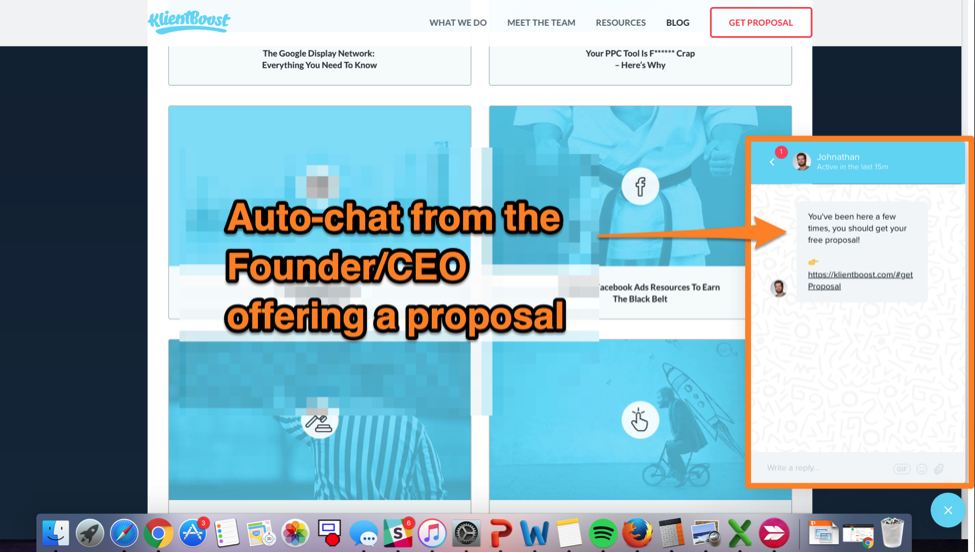
Here’s a closer view of the live chat, which auto-tailors messaging to your browsing behavior:
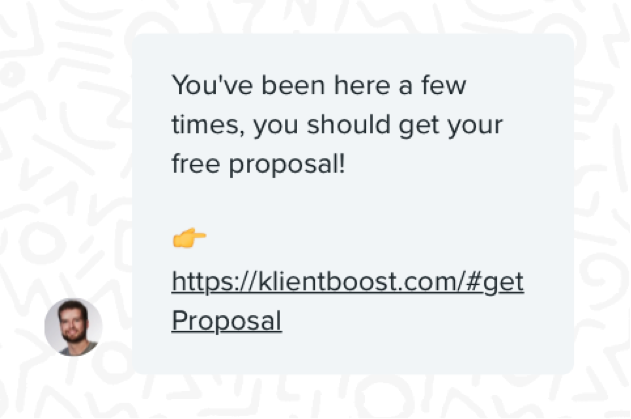
You click on the offer.
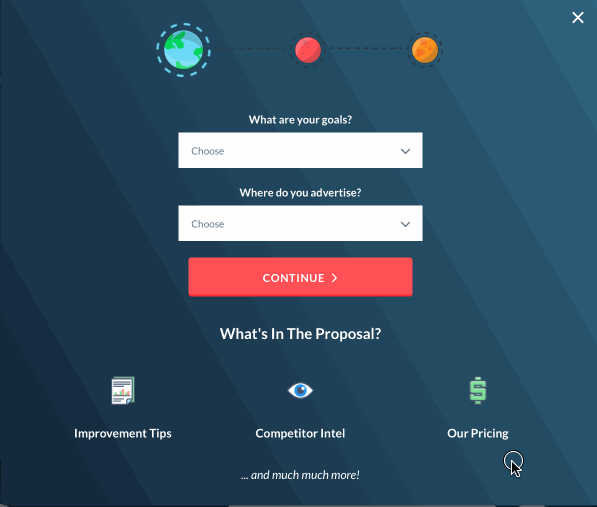
From here, your form triggers a lead for the sales team, and Johnathan follows up same-day. His email, titled “Hey, {!First Name},” asks for a 15-minute call to fulfill the request.
You have the call, and he keeps it to 15 minutes — on the dot, amazingly.
Within 24 hours, he sends over a proposal.
Complete and utter #efficiency.
Here’s what happened:
The team at KlientBoost figured out that proposals are a shiny object for prospects. And they started using it to their advantage to capture leads and qualify them.
It’s a win-win, because prospects get the proposal they’re looking for.
“What was happening before was people would read a blog post and then were ready to work with us right away” says KlientBoost CEO and Founder Johnathan Dane. “Armed with that insight, we wanted to challenge the assumption that we need to nurture the customer journey. Even for a complex sale like working with an agency, people are ready to go relatively quickly. Our sales cycle usually doesn’t exceed 7 days.”
That pointing finger emoji with the proposal request CTA in the live chat has driven double the performance than both “Get Pricing” and “Get Audit/Evaluation.”
Tip: If you promise a proposal, keep with it. The onus is on you to get all the info you need on a call so can fully tailor a proposal to what they need.
Directions to use the template above
- Copy or Download the document to save it as a template for your own use. File > Make a Copy if you like to work in Google Docs OR File > Download As > Microsoft Word if you prefer Word.
- Replace “Your logo goes here” on the title page with your company’s logo. The higher quality, the better. Make sure it’s at least 300 pixels wide. If it’s not, ask your marketing team for a higher quality JPG.
- Change any text in red now to your company’s information. Notice: you’ll need to change the Executive Summary, Proposed Solution, Custom Pricing, and Next Steps to your brand’s colors. Ask your marketing team for the hex code.
- Each time you’re preparing the template to send to a prospect, you’ll need to customize the information that’s in blue, as well as the images.
- Before you send the template, choose “Command + A” on a Mac or “Control + A” on a PC to highlight all of the text in your document. Then, remove the highlighting:
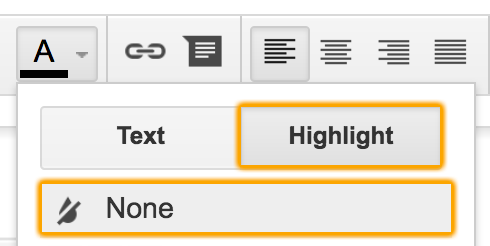
Over To You
Did we miss anything? Feel free to share your favorite proposal template! We’d love to hear from you. Tweet us: @Yesware.
Get sales tips and strategies delivered straight to your inbox.
Yesware will help you generate more sales right from your inbox. Try our Outlook add-on or Gmail Chrome extension for free, forever!
Related Articles
Anya Vitko
Casey O'Connor
Jenny Keohane
Sales, deal management, and communication tips for your inbox
![A Proposal Template That Does The Heavy Lifting For You [Free Download]](/blog/_next/image/?url=https%3A%2F%2Fwww.yesware.com%2Fwp-content%2Fuploads%2F2019%2F05%2Fproposal-template.jpg&w=1984&q=75)



